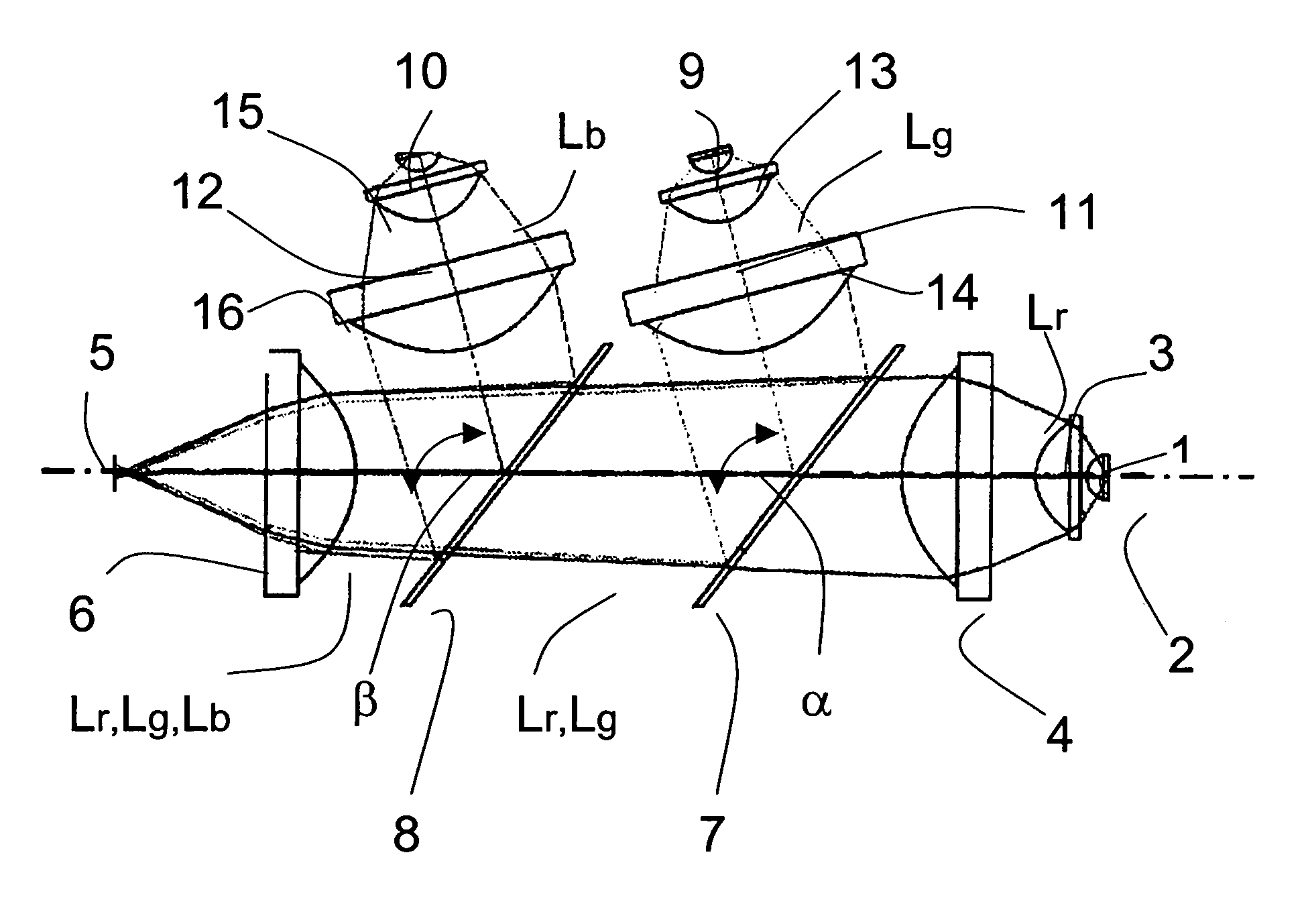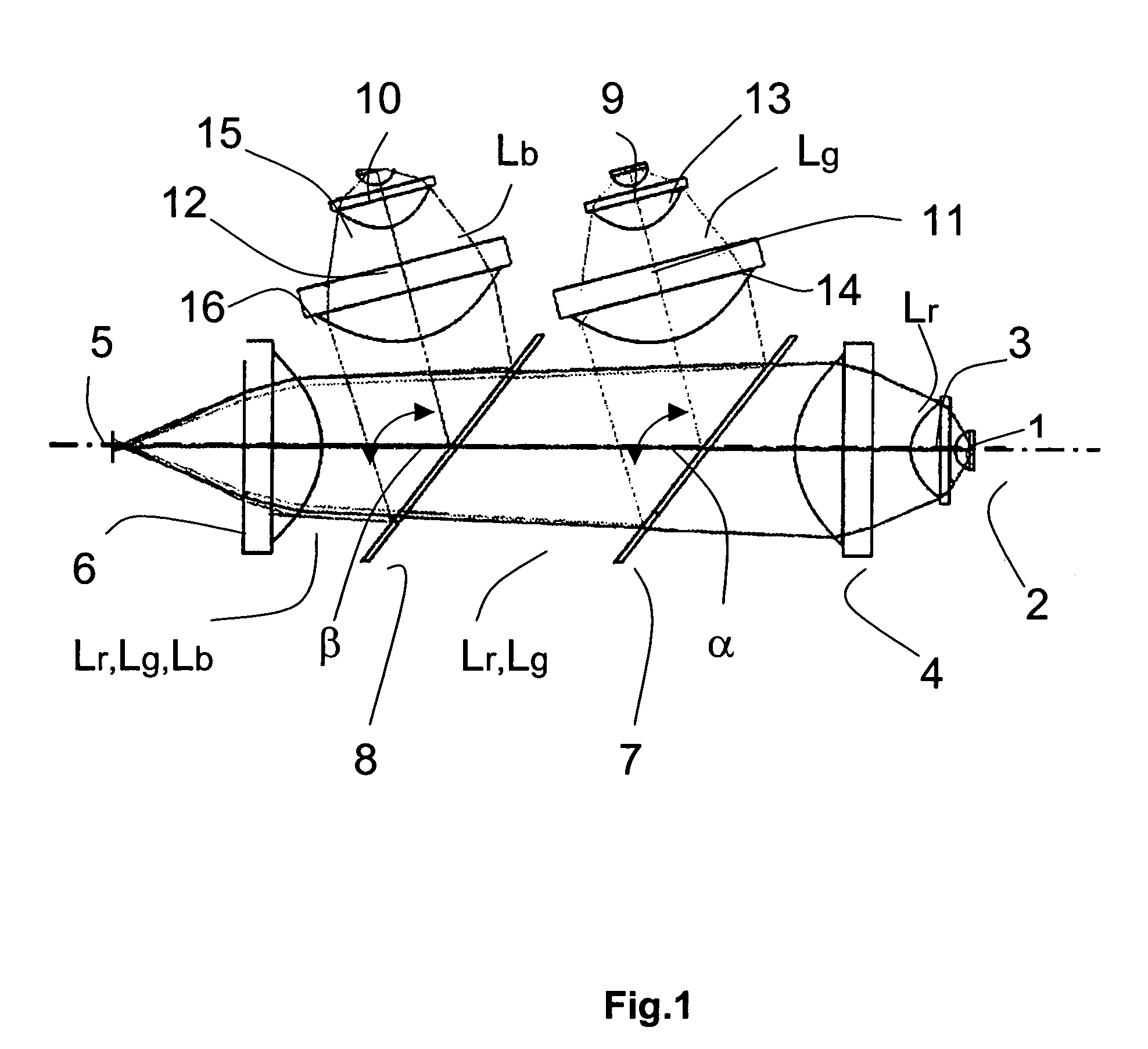Illumination module for color display
a technology of color display and illumination module, which is applied in the field of illumination module for color display, can solve the problems of low light efficiency, large size of illumination module, and high cost of arrays, and achieve the effect of reducing the size of illumination modul
- Summary
- Abstract
- Description
- Claims
- Application Information
AI Technical Summary
Benefits of technology
Problems solved by technology
Method used
Image
Examples
Embodiment Construction
[0025]The illumination module, according to the invention, is described in greater detail in the following example of an embodiment.
[0026]The corresponding figure shows a red LED 1, whose optical axis lies on the optical axis 2 of the illumination module, wherein the light beams Lr are collimated through convergent lenses 3 and 4. For the purpose of focusing the light beams Lr onto the light entry surfaces 5 of a light-mixing rod, which is not depicted in detail, an additional convergent lens 6 is located in the beam path. The convergent lenses 3, 4 and 6 are broadband lumenized plastic lenses, which each have at least one aspheric surface and are arranged on the optical axis 2 in such a way that the aspheric surfaces of the convergent lenses 3 and 4 are oriented toward the light entry surface 5 and the aspheric surface of the convergent lens 6 is oriented toward the LED 1.
[0027]For the purpose of laterally inputting the colors green and blue on the optical axis 2, two dichroic filt...
PUM
 Login to View More
Login to View More Abstract
Description
Claims
Application Information
 Login to View More
Login to View More - R&D
- Intellectual Property
- Life Sciences
- Materials
- Tech Scout
- Unparalleled Data Quality
- Higher Quality Content
- 60% Fewer Hallucinations
Browse by: Latest US Patents, China's latest patents, Technical Efficacy Thesaurus, Application Domain, Technology Topic, Popular Technical Reports.
© 2025 PatSnap. All rights reserved.Legal|Privacy policy|Modern Slavery Act Transparency Statement|Sitemap|About US| Contact US: help@patsnap.com


